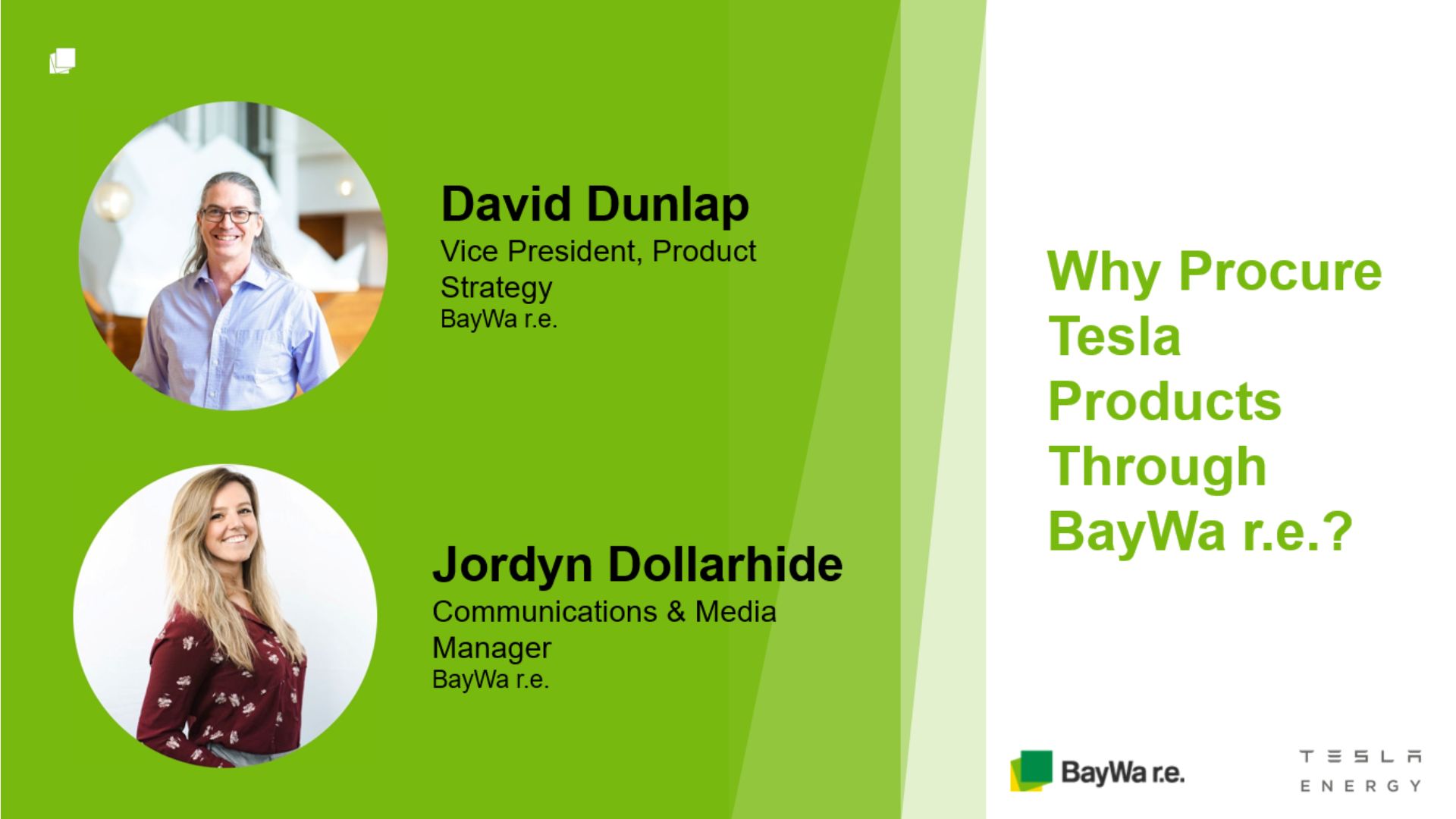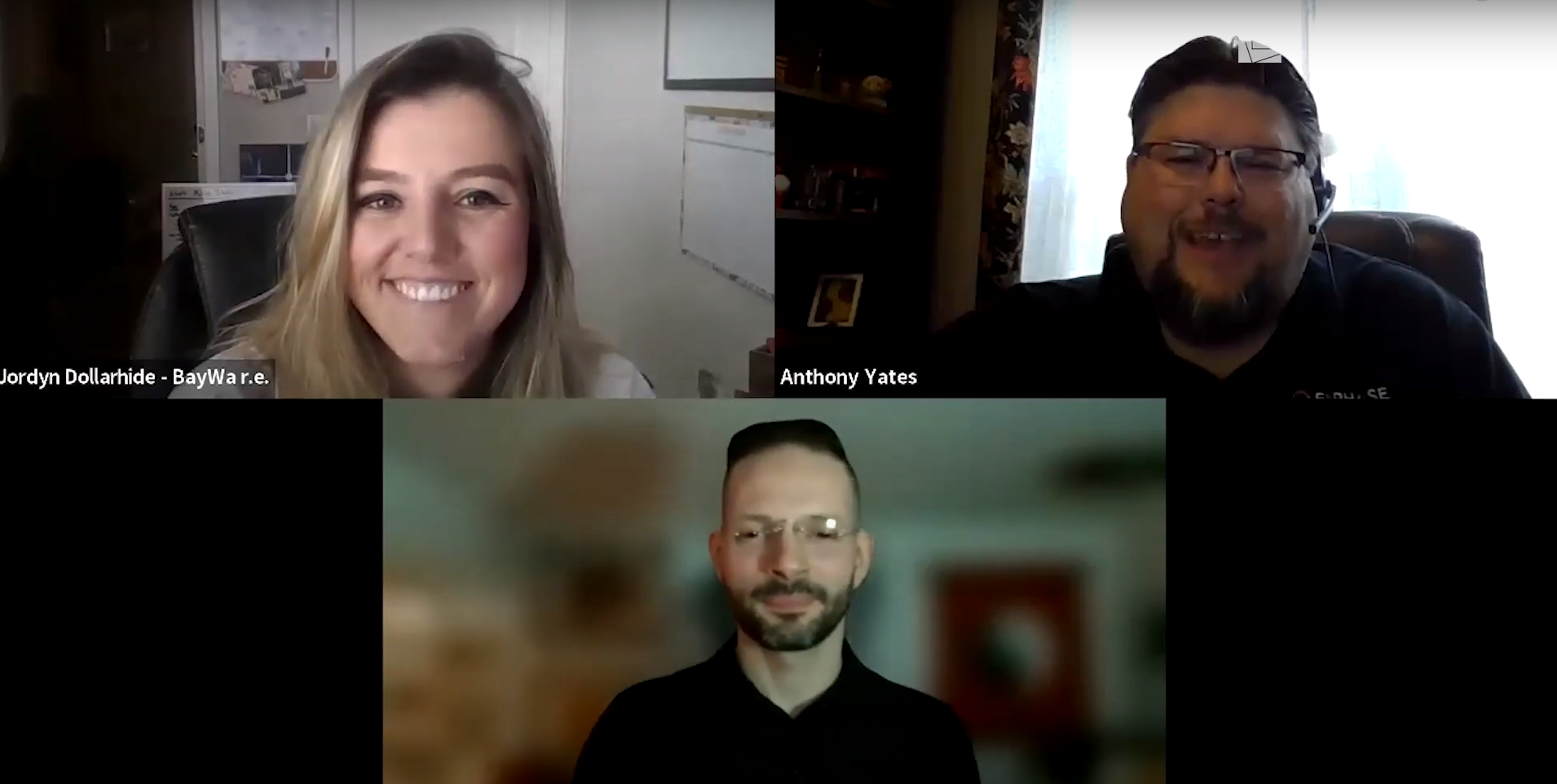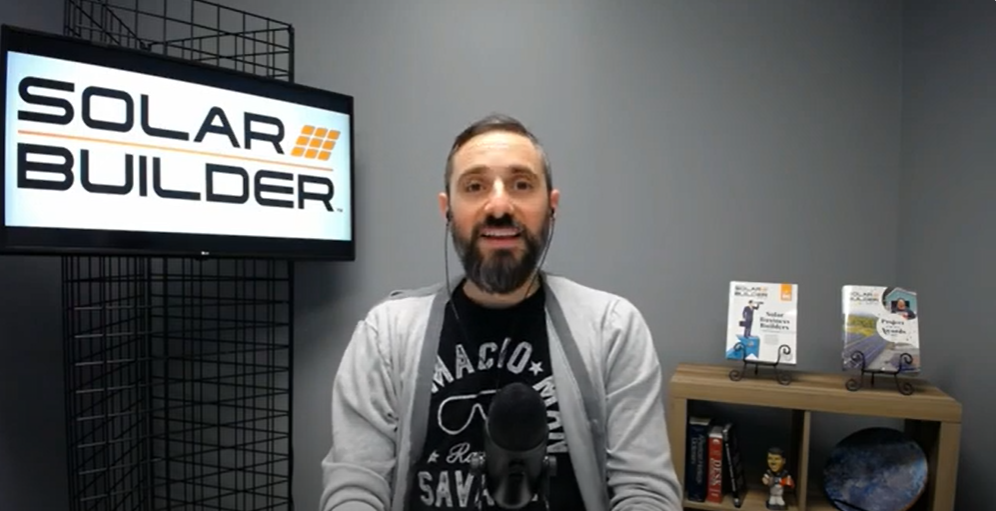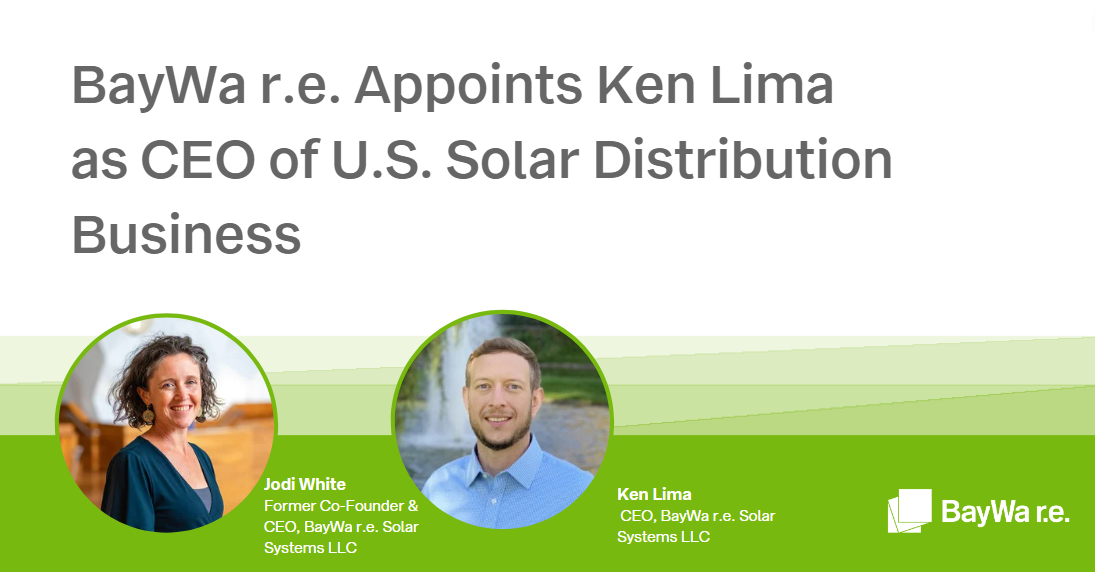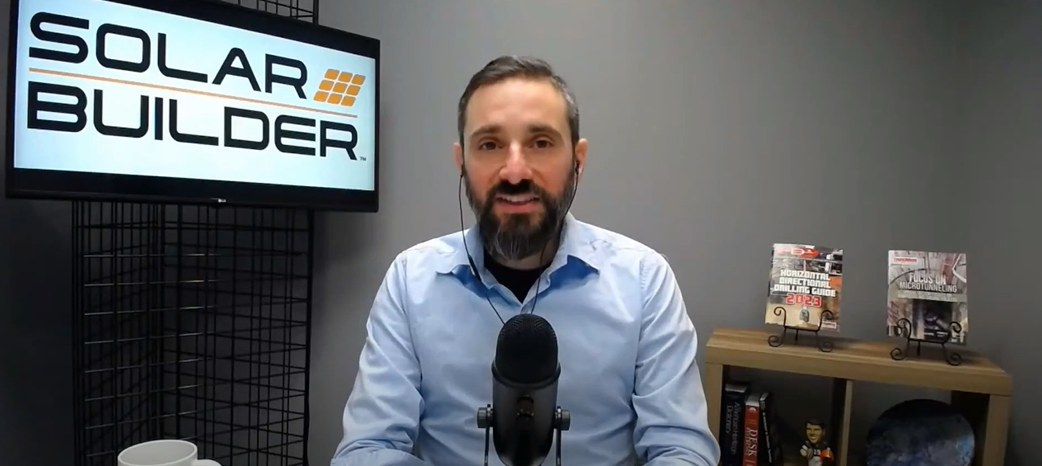If you’ve known us for a while, you may have noticed that we at BayWa r.e. Solar Systems have been growing our conversation around the commercial solar space — including this new podcast with Guillaume Casanova, our Director of Commercial Solutions.
Our commercial solar content is just as informative and timely as the residential solar knowledge you’ve come to know us for. Tune into this latest podcast, and be sure to also check out our first commercial podcast recorded in early Q1.
Enjoy the show — and stay in touch to tell us your requests for upcoming solar podcasts and blogposts!
— Tom Miller, Marketing Director
Podcast Summary
The Slow Roll Out of Winter: January seemed to be a better month than we all anticipated. There is some spillover from Q4 — though a little bit less than usual because the ITC was extended at the end of the year. February is always like the “catch-up” moment for the industry: it’s winter most everywhere in the United States (and some with truly calamitous storms), so developers and installers are not necessarily going on rooftops.
Commercial Solar Knowledge Base
Bookmark our commercial and industrial (C&I) information page for solar contractors and stay updated on industry trends and product news.
Subscribe to The Current
Receive monthly email briefings on C&I solar segment updates, supply chain intelligence, and product tips in a short, digestible format.
Marching Forward: At BayWa r.e. Solar Systems we’ve seen a good March numbers. Our commercial customers are reaching out for quotes, and there are more developers talking about financing, engineering, lining up procurements, and looking ahead at the product roadmap for coming months. There’s a momentum we’re starting to feel — such as all the interest we received after our C&I equipment roadmap webinar featuring JA Solar, SolarEdge, and Unirac, where we briefed our audience on upcoming products this year.
Bullish on Green: Green stocks and solar energy in general remain positive. Certainly, there’s been chatter about growing inflation over the next few years and thus impacts to discount rates and present value of investments. But that shouldn’t change anything about solar, especially with a U.S. administration that is very green-oriented.
“Commercial solar can be a big educational step to take for the EPC. You have to learn the valuation and financing, find a good bank and financial partner, learn the paperwork. But it’s what we do to take risks to reap rewards.”
— Guillaume Casanova, BayWa r.e. Solar Systems
Commercial Storage, Coast to Coast: We at BayWa r.e. Solar Systems are seeing a lot of interest from customers all across the country — from an agricultural packaging plant in California to a hotel in Connecticut, from a library in the Midwest to a project in the Caribbean. And we’re seeing a lot of customers asking, “How should I do this? What platform do I need to use” and so forth. We take them through the stages of doing a commercial storage proposal, how it would work, what to look for in future projects. We also guide them on different ways to monetize revenue streams from the grid — demand charge management, peak shaving, time of use, the wholesale market, et cetera. There’s a lot of education to be shared.
Translating Storage Benefits to the End User: There are some quick tips EPC’s can benefit from. What we want to be able to say is, “Hey, we’re going to install storage and we’re going to save you money on your electricity bill for the next 10 to 15 years — however long the storage will be in play.” You can calculate those cash flows, discounting for future inflation, and demonstrate the lifetime value of the project. So, commercial solar can be a big educational step to take for the EPC as well. you have to learn the valuation and financing, find a good bank and financial partner, learn the paperwork. But it’s what we do to take risks to reap rewards.
The Role of Software Integrators in Driving Storage: C&I storage systems have all your standard components: the battery and the inverters or whatever power electronics that enable you to convert your current — plus your energy management system software that lets you regulate discharge and so on. Integrators are the people that bring their software expertise to integrate all three together. We need software to manage these installed systems, analyze for past performance, and use artificial intelligence to anticipate demand and usage. For example, comparing the equivalent battery packs and system size, the blended savings per kilowatt hour with STEM software in place is about 10 to 15% higher than some other systems. Partnering with savvy integrators will help contractors and developers calculate and communicate the maximum savings out of a planned system.
Supply Chain Stumbles and Sales Pivots: Manufacturer lead times are very long now to deliver a storage system. Some are quoting timelines like end of 2021 and early 2022 — essentially 10 to 12 months from now. It can slow down your bids and make people reconsider. Customers may be tempted to wait, or they might try to talk to other installers, even though the whole industry is going through these shortages. But that doesn’t mean you stop selling. One thing you can do is get smarter about storage and financing and monetizing and all of this project valuation number crunching. Because the truth is, the close rate is still low in the C&I side of things. So, you’re going to have to have a lot of conversations as you pitch customers and projects — and the more educated you are, the better you’ll be at getting there.
Understanding the Time Frame of C&I Sales — and What You Can Do: Six to nine months of project development is not unheard of in the C&I solar and storage industry. To fill these staggered time frames, you should get smart about the market and keep finding customers. Understand the geographic and market segment pockets where the sales are thriving at the moment. Then you should discuss those projects and start modeling it out on energy tool base. Look utility bills and the interval data and start looking at the return on investment for this type of project. Gage how the customer reacts. Try a different size of battery. See how these variables change the economics. It’s a lot more than simply pitching as asking “Is this building better with or without storage?”
“[Shipping] challenges will only reward the savvy EPC’s who are already talking to their main suppliers and distributors, asking what is potentially coming up short and how they can adapt. This is always what we preach at BayWa r.e. Solar Systems: talk to us and our account managers, so we can understand and work with your forecasted demand for the next three, four, five months and onward. We can help you take a bad situation and find opportunities to make good out of it.”
— Guillaume Casanova, BayWa r.e. Solar Systems
Getting Around the Ripple Effect: What then happens is that EPC’s start asking to switch to, say, a different inverter provider — and then that inverter provider themselves become constrained, which forces other contractors to switch. Combined with the already occurring manufacturer shortages, and we can expect maybe price increases this year. But these challenges will only reward the savvy EPC’s who are already talking to their main suppliers and distributors, asking what is potentially coming up short and how they can adapt. This is always what we preach at BayWa r.e. Solar Systems: talk to us and our account managers, so we can understand and work with your forecasted demand for the next three, four, five months and onward. We can help you take a bad situation and find opportunities to make good out of it.
Coming Attractions: Although the lead time on them is lengthening, we do have an inbound shipment of JMS-F (SunSpec Rapid Shutdown System) units from SMA, so talk to us if you’re on the lookout. We’ll also be hosting a commercial solar webinar with SMA on April 1 at 10 AM PT. If you’re an EPC that is working in commercial, it’s going to be a great conversation about their new rapid shut down units with their helpful product reps.

Guillaume Casanova is Director of Commercial Solutions at BayWa r.e. Solar Systems (USA). He brings more than 12 years of experience in wealth management, market analysis, and renewables industry partnerships to our team. Contact Guillaume at guillaume.casanova@baywa-re.com.
BayWa r.e. Solar Systems LLC supplies residential and commercial solar installers in the United States with quality solar + storage components, forecasting, business planning advice, and a community of experts. Visit www.solar-distribution.com to read our industry insights articles and stream our Solar Tech Talk and Solar Town Hall podcasts on YouTube and Spotify. Follow us on LinkedIn, Twitter, and Facebook to stay connected. Ask us about our Split Pay financing program and use our industry-leading Webstore to save time, get gear shipped, and get jobs done! Part of the BayWa r.e. Global family of renewable energy companies.
